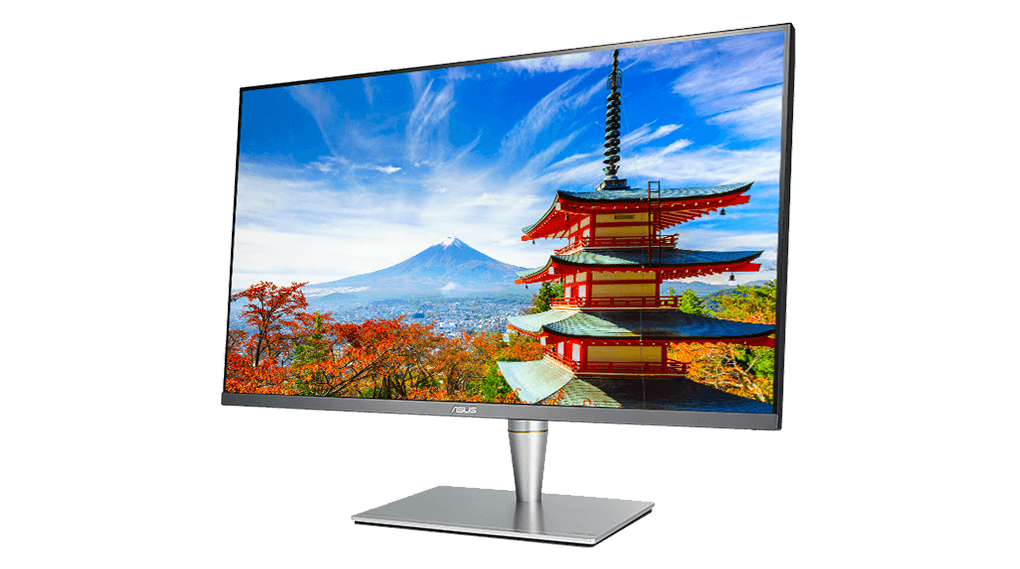
Colorist, President of CSIKevin Shaw
Kevin has been actively engaged in the introduction of HDR for several years now. He is a recognised Dolby Vision instructor and has recently studied the Onyx Cinema with Samsung. But the home television market is evolving faster than anything else and has presented a conundrum to colorists and productions alike. Just two years ago there was only one commercially available reference monitor that met the expectations of colorists for HDR10 mastering. HDR10 is an important standard because it is the only HDR television standard that all the current devices support. In the last year we have seen dozens of displays and several technologies come to market, but all of those that meet HDR10 and better mastering specifications cost well over US $20,000. Now, there is a challenger with a reference display less than a tenth of that price that brings high end HDR to those of us without jobs with six figure budgets.

ProArt PA32UC
ASUS, a company known for its computer and graphics products has now introduced a revolutionary 3840 x 2160 UHD Premium reference display, the PA32UC, that delivers perfect rec. 709 (without a LUT box), DCI P3 and yes, four flavors of HDR including HDR10 and HLG, with options to clip at 1000 nits or to hit its peak of over 1200 nits. OK, none of that is particularly revolutionary except that this 32” monitor costs about $2000 – that’s less than a tenth of any competitive product. Sure, there are televisions close to that price that support HDR, but they do not have the menus and settings of a professional reference display, they do not calibrate as accurately and they do not reach 1000 nits since most are OLEDs. Even if there was a suitable television it would undoubtedly be too big for my installation. I don’t have a large room where I can hang the god monitor on the wall, but the 32” ASUS is the perfect size for my desktop installation.
The PA32UC breathes quality as it comes out of its robust packing case. First surprise as the lid comes off is the X-rite i1 display colorimeter for accurate calibration of the screen. It comes beautifully calibrated from the factory, complete with a report card, but this is a nice bonus if like me you need to modify the settings. The i1 display is a much better product than the probes that other monitors in this price range come with.
Next comes the heavy metal stand that adds stability and robustness to the monitor. What I really like though is that the display can rotate all the way to portrait position, which makes connecting the plethora of inputs amazingly easy. The inputs are reference display
- 4 HDMI
- 1 display port
- 2 thunderbolt ports with power (one input and one loop through)
- 1 USB 3.0 type-C

There are an additional 2 x USB 3.0 Type A and 1 USB 3.0 Type B that form a USB hub and there is one more covered USB 2.0 port that is used for service updates. I recently did an upgrade that dramatically improves the black level and the whole process could not have been easier. Plug in a USB stick, trigger the update, wait a couple of minutes and reboot the display. All done and easy to check. The presets in the latest update are
- Standard
- sRGB
- Adobe RGB
- Rec. 2020
- DCI -P3
- Rec. 709
- HDR
- -PQ1000 (unclipped)
- -UHD Premium (clipped to 1000nits)
- -ASUS (clipped to 1000nits)
- -HLG
- User 1
- User 2
Older versions of the display will need a service update as described above to get these menus. I have read various reports from past users that complained they did not have the rec. 709 setting, or the HLG setting. The update only takes a few minutes, and anyone can do it. Clearly ASUS are serious about the post production market and reacting to customer feedback – so I am looking forward to exciting news from them at NAB.
I re-calibrated the rec. 709 setting which ships very bright. It comes at a brightness more like a modern television than the traditional mastering reference displays. I was very happy with the ease and accuracy of calibration that I achieved with the built-in controls.
In conclusion, the ASUS PA32UC meets my needs as a professional rec. 709 reference display and allows me to do accurate HDR mastering and monitoring without the compromises of televisions or the price tag of the usual industry favorites. ASUS is not yet the obvious name for monitoring in our industry, although of course they are very highly regarded in the PC and gaming markets, but I am certain that is about to change! You really ought to check this out for yourselves.
Kevin Shaw, CSI
Colorist Consultant – Finalcolor Ltd,
Instructor – International Colorist Academy
President – Colorist Society International
Origin article:https://icolorist.com/2019/03/30/a-diamond-in-the-rough/
